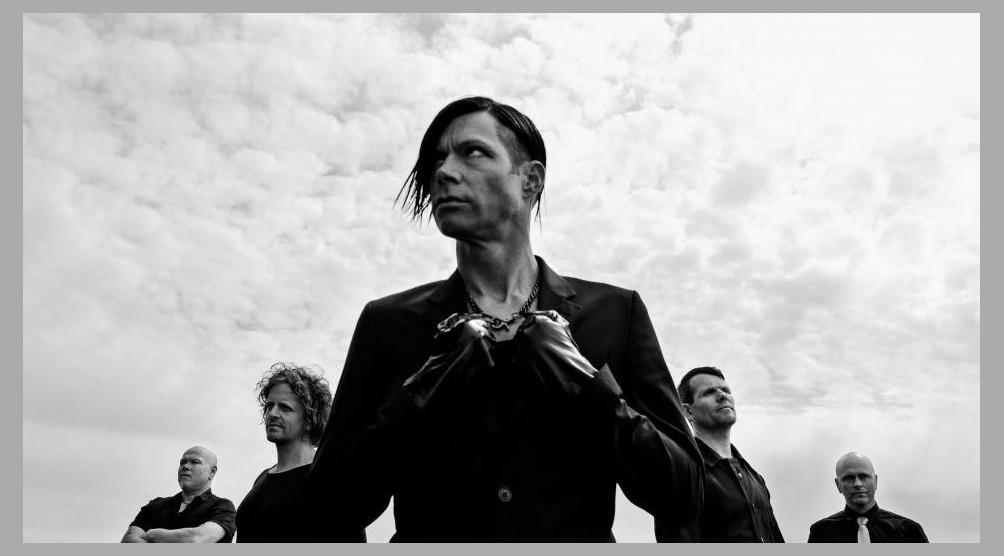 Seigmen
Seigmen
Seigmen: The Norwegian Pioneers of Industrial Metal
In the annals of Norwegian music, the name Seigmen stands as a seminal force that revolutionized the industrial metal landscape. Formed in 1989, the band embarked on a remarkable journey marked by artistic challenges, controversies, and a profound impact on the genre.
Birth of an Industrial Juggernaut
Seigmen emerged from the vibrant Oslo music scene, their sound a potent blend of industrial rhythms, metallic aggression, and melodic hooks. The core lineup featured vocalist Alex Møklebust, guitarist Kim Ljung, bassist Marius Roth Christensen, and drummer Øystein Austad. Their seminal debut album, "Metropolis," released in 1992, established them as pioneers in the burgeoning industrial metal genre.
Controversy and Artistic Evolution
Seigmen's music courted controversy, particularly with the release of their 1994 album "Total." The album's cover art, depicting a pregnant woman with a swollen belly, drew accusations of misogyny and sexism. Undeterred, the band defended their artistic expression, arguing that the image reflected the complexities and contradictions of society.
Beyond the controversies, Seigmen continued to evolve musically, incorporating elements of electronica, ambient music, and traditional Norwegian folk influences into their sound. Their 1996 album "Radiowaves" showcased their experimentation, while their 1999 release "Monument" marked a return to their industrial roots.
Discography and Legacy
Throughout their active years, Seigmen released five studio albums, one live album, and numerous singles. Their discography stands as a testament to their artistic versatility and enduring influence. Songs like "Döderlein," "Metropolis," and "Rosa" became anthems for fans of the genre.
Members and Their Contributions
* Alex Møklebust (vocals): Møklebust's powerful vocals and enigmatic stage presence were a defining element of Seigmen's sound.
* Kim Ljung (guitar): Ljung's unconventional and experimental guitar playing added a unique textural element to the band's music.
* Marius Roth Christensen (bass): Christensen's driving bass lines provided a solid foundation for the band's heavy and pulsating rhythms.
* Øystein Austad (drums): Austad's intricate and precise drumming brought an industrial intensity to Seigmen's music.
Disbandment and Reunion
Seigmen disbanded in 2003, citing creative differences and personal issues. However, in 2015, the band reunited for a series of live performances, including a triumphant set at the Øya Festival in Oslo. The reunion reignited interest in their music, leading to a new generation of fans discovering the groundbreaking work of Seigmen.
Conclusion
Seigmen's impact on industrial metal cannot be overstated. Their fearless experimentation, controversial artistic vision, and enduring music continue to inspire musicians and captivate audiences to this day. As one of the pioneers of the genre, Seigmen left an indelible mark on the musical landscape, forever etched as a legend in the annals of Norwegian and industrial music.
In the annals of Norwegian music, the name Seigmen stands as a seminal force that revolutionized the industrial metal landscape. Formed in 1989, the band embarked on a remarkable journey marked by artistic challenges, controversies, and a profound impact on the genre.
Birth of an Industrial Juggernaut
Seigmen emerged from the vibrant Oslo music scene, their sound a potent blend of industrial rhythms, metallic aggression, and melodic hooks. The core lineup featured vocalist Alex Møklebust, guitarist Kim Ljung, bassist Marius Roth Christensen, and drummer Øystein Austad. Their seminal debut album, "Metropolis," released in 1992, established them as pioneers in the burgeoning industrial metal genre.
Controversy and Artistic Evolution
Seigmen's music courted controversy, particularly with the release of their 1994 album "Total." The album's cover art, depicting a pregnant woman with a swollen belly, drew accusations of misogyny and sexism. Undeterred, the band defended their artistic expression, arguing that the image reflected the complexities and contradictions of society.
Beyond the controversies, Seigmen continued to evolve musically, incorporating elements of electronica, ambient music, and traditional Norwegian folk influences into their sound. Their 1996 album "Radiowaves" showcased their experimentation, while their 1999 release "Monument" marked a return to their industrial roots.
Discography and Legacy
Throughout their active years, Seigmen released five studio albums, one live album, and numerous singles. Their discography stands as a testament to their artistic versatility and enduring influence. Songs like "Döderlein," "Metropolis," and "Rosa" became anthems for fans of the genre.
Members and Their Contributions
* Alex Møklebust (vocals): Møklebust's powerful vocals and enigmatic stage presence were a defining element of Seigmen's sound.
* Kim Ljung (guitar): Ljung's unconventional and experimental guitar playing added a unique textural element to the band's music.
* Marius Roth Christensen (bass): Christensen's driving bass lines provided a solid foundation for the band's heavy and pulsating rhythms.
* Øystein Austad (drums): Austad's intricate and precise drumming brought an industrial intensity to Seigmen's music.
Disbandment and Reunion
Seigmen disbanded in 2003, citing creative differences and personal issues. However, in 2015, the band reunited for a series of live performances, including a triumphant set at the Øya Festival in Oslo. The reunion reignited interest in their music, leading to a new generation of fans discovering the groundbreaking work of Seigmen.
Conclusion
Seigmen's impact on industrial metal cannot be overstated. Their fearless experimentation, controversial artistic vision, and enduring music continue to inspire musicians and captivate audiences to this day. As one of the pioneers of the genre, Seigmen left an indelible mark on the musical landscape, forever etched as a legend in the annals of Norwegian and industrial music.